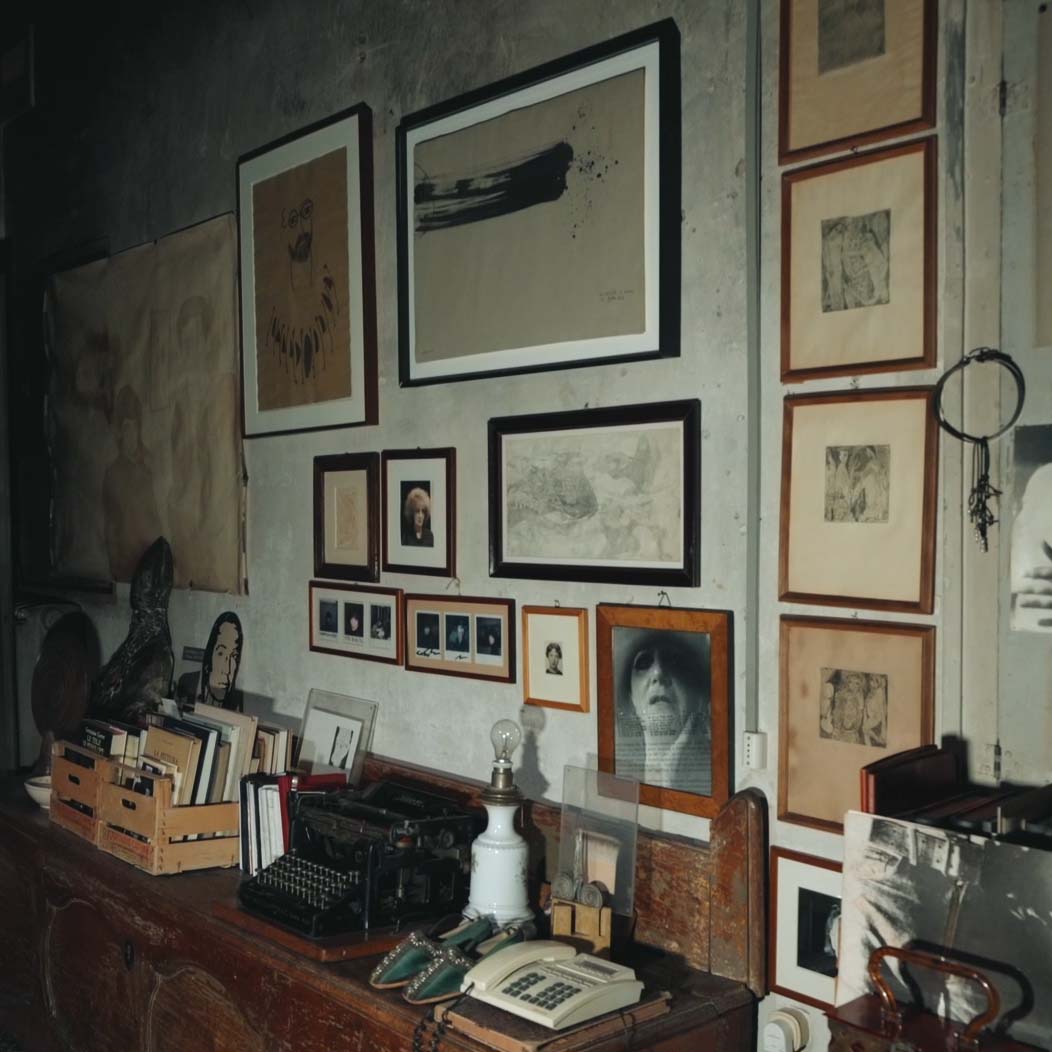How can we understand the phenomenon that is René Magritte? The artist’s collected writings are brimming with dreams, conversations, biographical anecdotes and artistic treatises that say a great deal about him.
Political pamphlets, artists’ manifestos, autobiographical notes, excerpts from letters, scripts, interview questions and answers, unfinished thoughts and parts of conversations: The collected writings of René Magritte span a period of more than 40 years and have at least as many facets as his paintings – and are just as enigmatic.
They cause confusion, make us stop and think, are provocative, repulsive, inspiring and astonishing all at once: “He was proud to eat his sandwich”, is the first sentence of a portfolio that Magritte attempted to write, but may never have completed; a flyer from 1958 is entitled “René Magritte questions the living stones” and under the heading “Thoughts not thought” we read in true Magritte-esque style: “I have never thought this.”
A fundamental distrust of art
Throughout his entire life, Magritte was occupied with the question of what mission an artist should pursue and which liberties he can allow himself in the creation of his works. Even looking back, he, who at times preferred to work as a commercial artist than subject his art to the fancy of some patron or other, did not consider himself part of the art scene: “As for the artists themselves, most of them happily gave up their freedom and put their art in the service of someone or something. Their worries and ambitions are generally the same as those of the next-best careerist. Thus I acquired a thorough distrust of art and artists, whether they were officially recognized as such or aspired to be, and I sensed that I had nothing in common with this guild.”

Magritte did not seek to please someone or other, but pursued a higher aim with his paintings. He sought to make familiar and everyday objects like a chair, an apple or a pipe “shriek aloud,” to question and mix up the natural order of things. The Surrealist movement provided something like a huge playground for these kinds of experiments, indeed, “Surrealism calls for a freedom for waking life that resembles the one we have when dreaming,” as we read in his notes. One text is also entitled “Surrealist Games”; short sentences that read like stage directions and call to mind Luis Bunuel’s mysterious short film “An Andalusian Dog.”
Psychoanalysis and the mystery of the world
Yet for all his affiliation with Surrealist circles, it is also clear from his writings that Magritte doubted the demands and means above all of the Parisian group around André Breton, and first and foremost the oft-praised psychoanalysis: “Art, as I understand it, defies psychoanalysis […] I take care to only paint pictures that evoke the mystery of the world. […] No sensible man believes that psychoanalysis could explain the mystery of the world.”

Letter by René Magritte of 1944, Image via sothebys.com
Magritte, the doubter: doubter of the symbolism and interpretability of common objects and of the immutable connection between things and their designations, doubter of established human thought and viewing patterns. It becomes apparent in his writings that these doubts fueled his creative output, his paintings; always with the goal of wakening observers from their habitual sleep and making them aware that behind every object is another object – whether visible or not.

These boots are made for walking
Shoes are silent storytellers, revealing secrets about their wearer's personality, status and desires. No wonder, then, that artists like Carol Rama...

Seeing nature anew – through a cube
In his early work, HANS HAACKE addressed the relationship between art and nature as well as the social interest in the reciprocal relationship between...

The film to the exhibition: Hans Haacke. Retrospective
A legend of institutional critique, an advocate of democracy, and an artist’s artist: The film accompanying the major retrospective at the SCHIRN...

A new look at the artist – “L’altra metà dell’avanguardia 1910–1940”
With “L’altra metà dell’avanguardia 1910–1940”, in 1980 Lea Vergine curated an exhibition at the Palazzo Reale in Milan that was one of the first...

Non-human living sculptures by Hans Haacke and Pierre Huyghe
In his early work, HANS HAACKE already integrated animals and plants as co-actors into his art. In that way he not only laid the foundations for a...

CURATOR TALK. CAROL RAMA
SCHIRN curator Martina Weinhart talks to Christina Mundici, director of the Carol Rama Archive in Turin, editor of the first Catalogue Raisonné and...

Freedom costs peanuts
HANS HAACKE responded immediately in 1990 to the fall of the Berlin Wall and turned a watchtower into art.

The film to the exhibition: CAROL RAMA. A REBEL OF MODERNITY
Radical, inventive, modern: The film accompanying the major retrospective at the SCHIRN provides insights into CAROL RAMA's work.

Now at the SCHIRN: Hans Haacke. Retrospective
A legend of institutional critique, an advocate of democracy, and an artist’s artist: the SCHIRN presents the groundbreaking work of the compelling...

Carol Rama’s Studio: A nucleus of creativity
CAROL RAMA determinedly forged her own path through the art world. Her spectacularly staged studio in Turin was opened to the public only a few years...